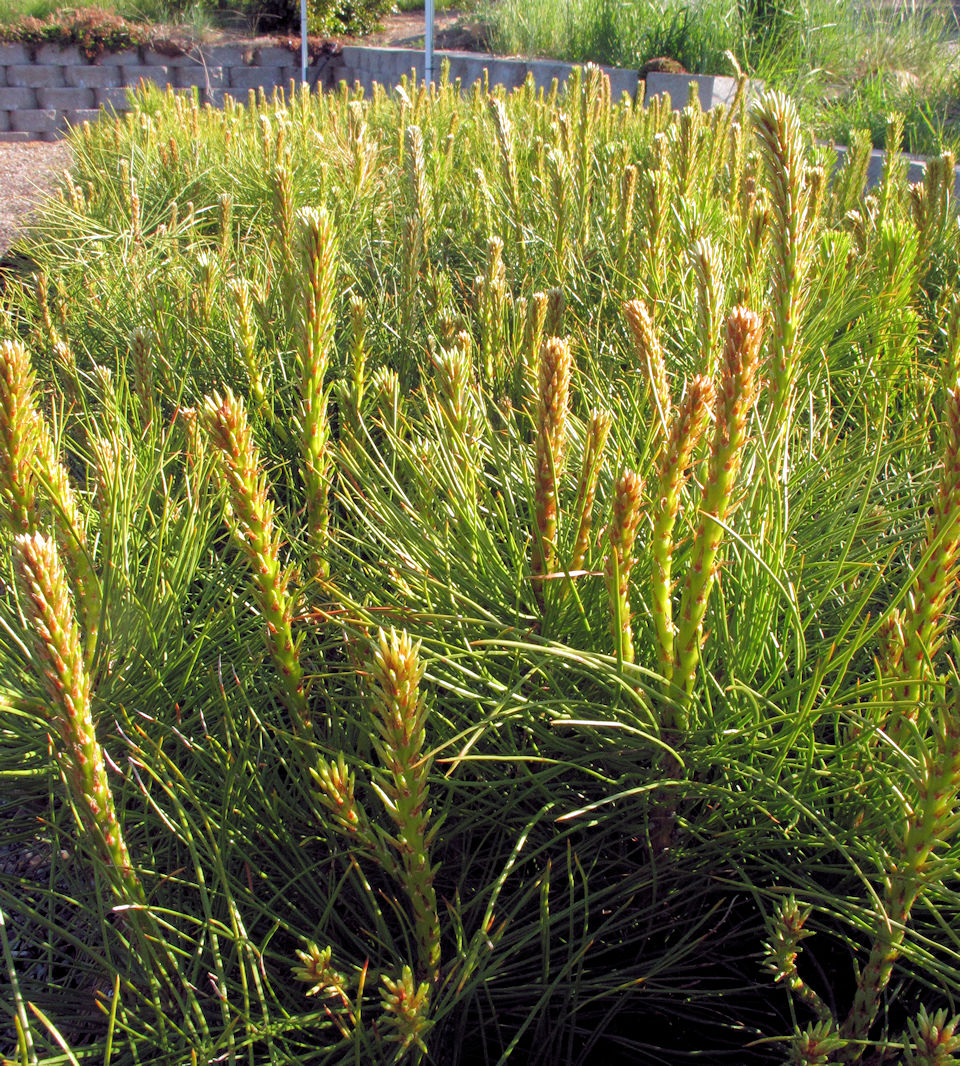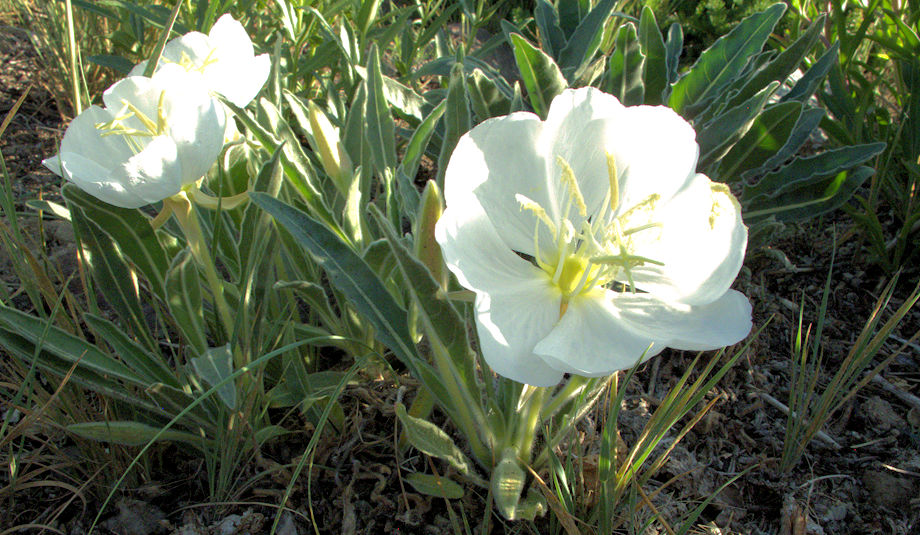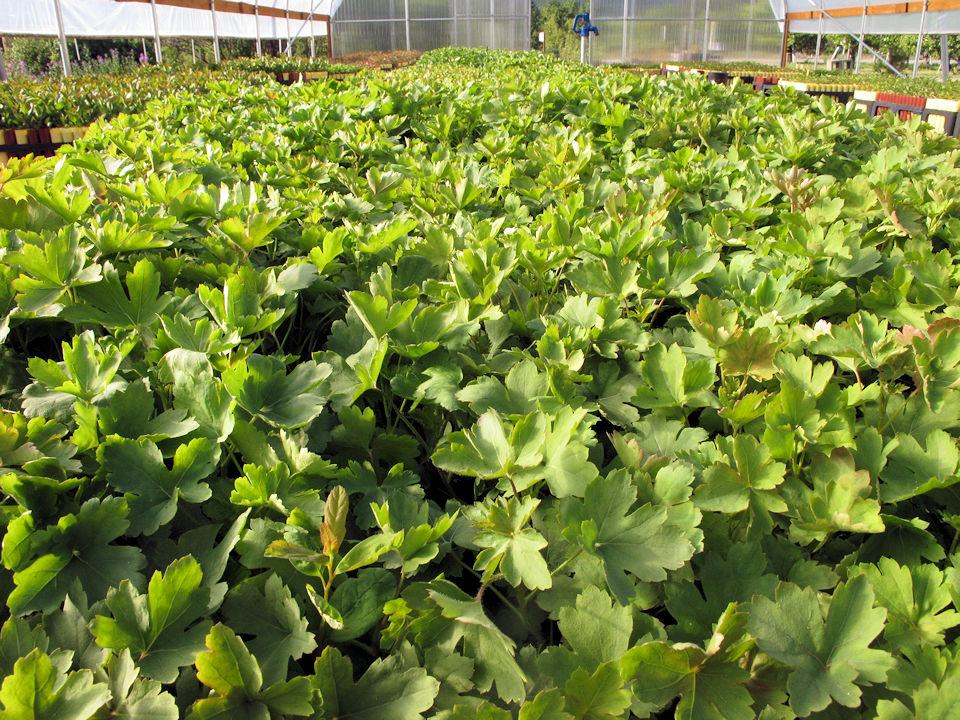Nursery Scenes during the Shutdown
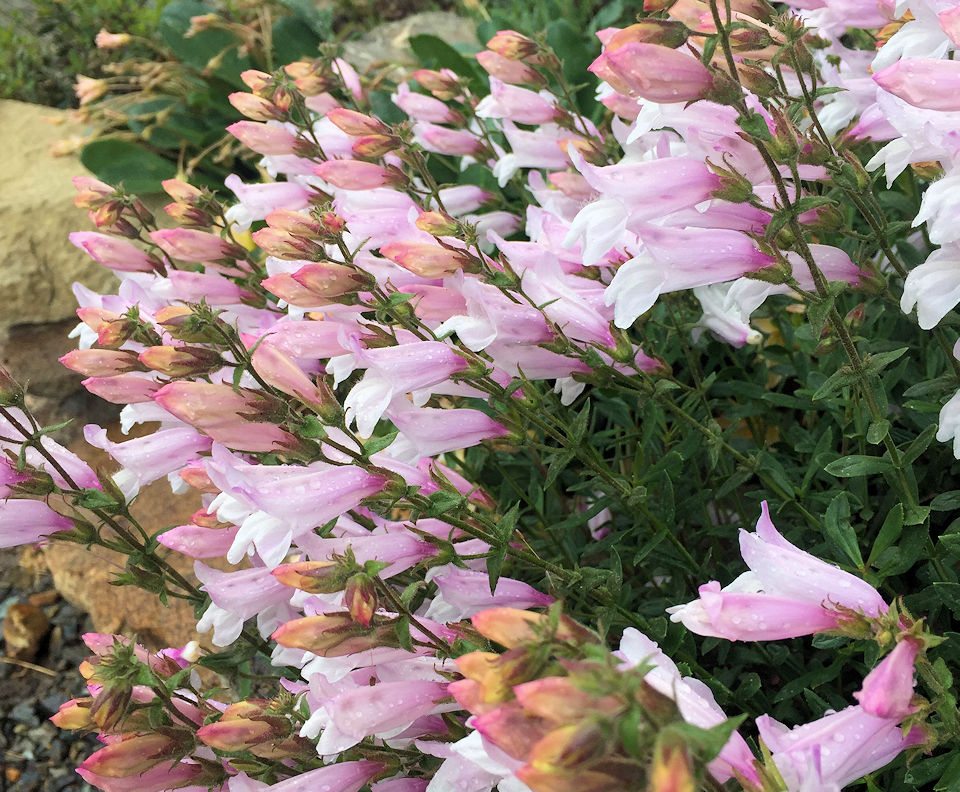
Shrubby penstemon (Penstemon fruticosus) – I spotted this pink form on a hike five years ago and snapped off a shoot on the way back down. I rooted it and can now propagate more of this lovely shrub from my mother plant.
We are all adjusting to living and doing business during this COVID-19 time. For Derby Canyon Natives it has led to a few changes but overall we are very fortunate to have plenty of work. We have been busier than ever, growing plants for many restoration projects slated for this fall.
Ponderosa pine (Pinus ponderosa), three-year old plants with vigorous new shoots
However, we are limiting retail sales to pre-orders only, for pickup at the nursery entrance, and will continue to do so at least through May. The health and safety of my employees is my top priority, and I have a great crew. This has meant that customers are unable to walk through the nursery, browsing, getting ideas, and enjoying changing native plant displays as we move through spring.
Desert evening primrose (Oenothera cespitosa) – this very drought adapted wildflower blooms for a month or more and reseeds “gently”, creating lovely little patches
I share here a few scenes from around the nursery, an admittedly poor substitute. The plants (and birds and insects and more) continue to live as they always do; for me it is renewing and reassuring that nature continues without regard to humanity’s worries and travails.
Seedlings of golden currant (Ribes aureum), soon to be potted up in larger containers. Can you spot the seedling of Douglas spirea (Spiraea douglasii) in the picture? This species is a bit of a weed in our seedling propagation program; we have several plants around the nursery and if we don’t remove all of their seed heads the tiny seeds create plants where we don’t want them!
Appreciate the world of nature around us, and stay well!
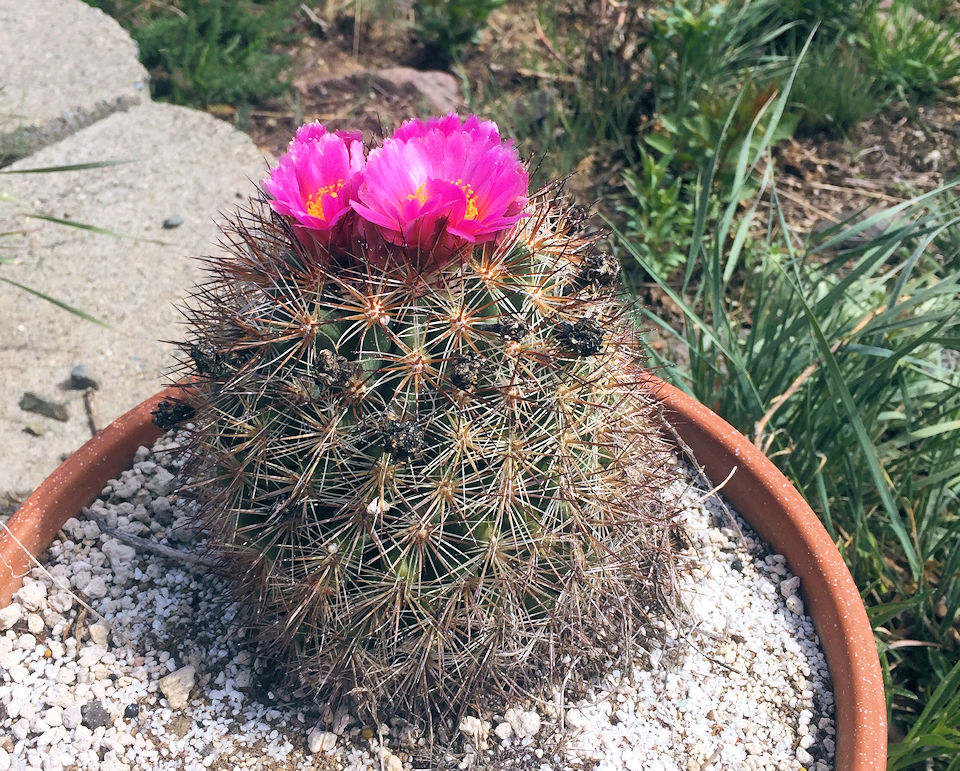 The lovely flowers of Central Washington’s ball cactus, Pediocactus nigrispinus
The lovely flowers of Central Washington’s ball cactus, Pediocactus nigrispinus
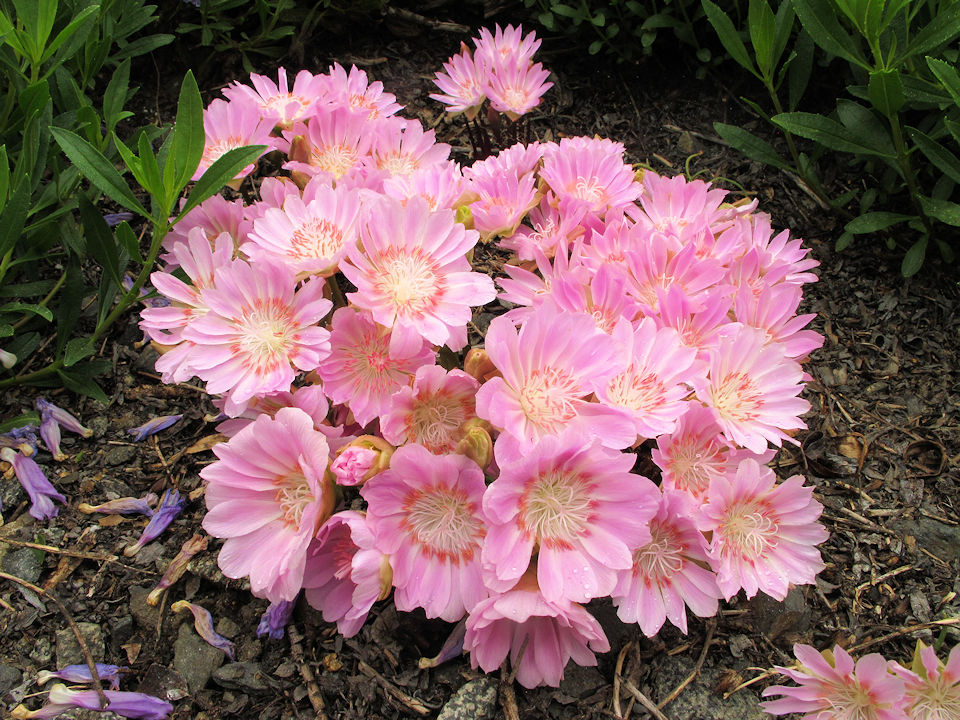 Bitterroot (Lewisia rediviva) puts on a stunning floral display; three to four weeks after this photo is taken there will be no sign that it was ever there as it goes dormant for the summer.
Bitterroot (Lewisia rediviva) puts on a stunning floral display; three to four weeks after this photo is taken there will be no sign that it was ever there as it goes dormant for the summer.
Blue flax (Linum lewisii) – a charming wildflower from the Columbia Basin, it self-seeds readily but is not really invasive, and has a continuous flower display for months, exceptional for a wildflower from these parts
